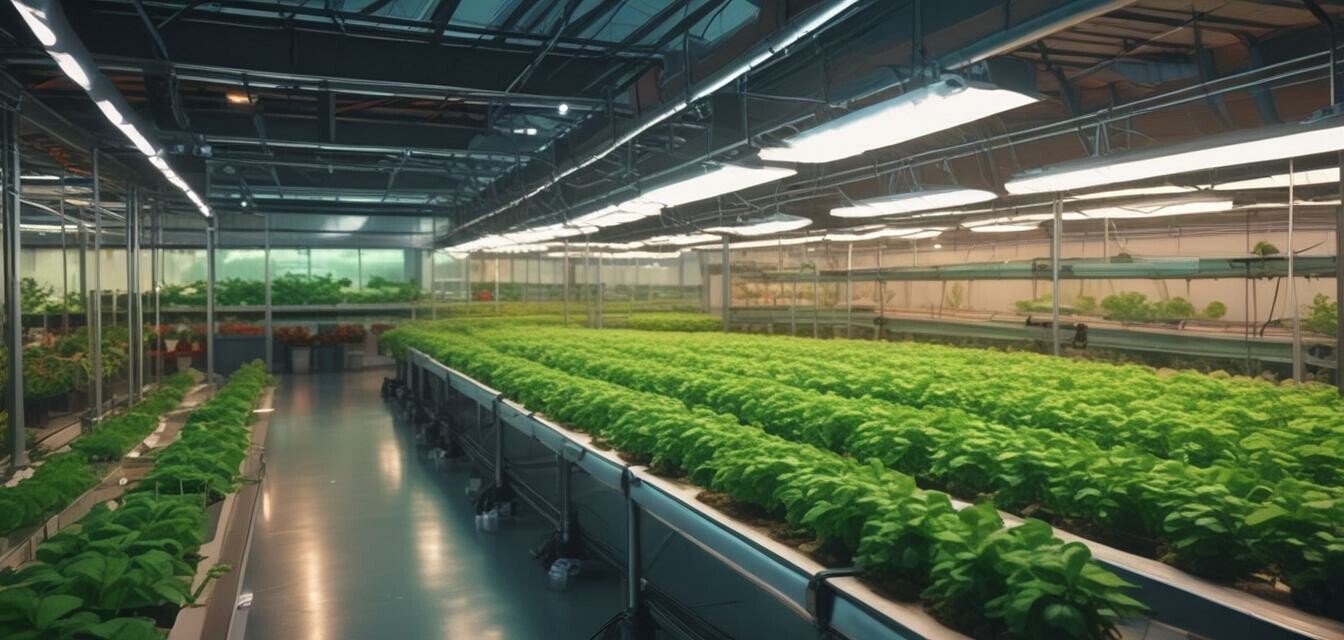
Managing Light Exposure in Indoor Hydroponics
Key Takeaways
- Understanding light spectrum is crucial for plant health in hydroponics.
- Use timers to mimic natural sunlight cycles for optimal growth.
- Select appropriate lighting based on plant species for best results.
- Monitor light intensity and duration to prevent photo-inhibition.
- Adjust the distance and positioning of lights to minimize heat stress on plants.
Managing light exposure is one of the most critical aspects of indoor hydroponics. Adequate light allows your plants to photosynthesize, which is fundamental for growth and productivity. This guide explores the essential factors in managing light exposure within hydroponic systems, ensuring that you'll cultivate healthy, thriving plants.
The importance of light in hydroponics
Light serves as the primary energy source for plants. In hydroponic systems, where soil is absent, providing the right light is even more crucial since there's no natural sunlight to rely on. Understanding how to effectively manage light exposure can lead to successful harvests. Below are the key points to consider:
Light spectrum and plant growth
Different stages of plant growth require varying light spectrums. Here’s a breakdown:
| Growth Stage | Optimal Light Spectrum | Specific Light Requirements |
|---|---|---|
| Seedling | Blue Light (400-500 nm) | Encourages strong root development and prevents stretching. |
| Vegetative | Full Spectrum (400-700 nm) | Promotes leaf growth and overall plant health. |
| Flowering/Fruiting | Red Light (600-700 nm) | Encourages blooming and fruit production; may use less blue light. |
Types of grow lights
Selecting the right type of light can make a significant difference in plant growth. Here are some common types of grow lights:
- LED Grow Lights: Energy-efficient and long-lasting, ideal for all growth stages.
- Fluorescent Lights: Good for seedlings and young plants; less intense than LEDs.
- HID Lights: High intensity but requires more energy and generates heat.
- Incandescent Lights: Generally not suggested due to low efficiency and high heat output.
Managing light exposure effectively
Effective light management involves balancing light duration, intensity, and placement. Here’s how to optimize the light exposure for your plants:
Setting light duration
Most plants require 12 to 18 hours of light per day. Using a timer can help automate the light cycle, mimicking natural daylight conditions. Here's a basic guide:
- Seedlings: 16-18 hours daily.
- Vegetative Plants: 14-16 hours daily.
- Flowering Plants: 12-14 hours daily.
Measuring light intensity
Light intensity is critical for plant development. Too much light can cause photo-inhibition, while too little can stunt growth. Consider using a light meter to measure the light intensity. Here’s a simple scale:
| Light Intensity Level | Recommended Action |
|---|---|
| Low (below 300 µmol/m²/s) | Increase light duration or intensity. |
| Moderate (300-600 µmol/m²/s) | Maintain current settings; ideal for vegetative growth. |
| High (above 600 µmol/m²/s) | Monitor for signs of stress; may need to adjust light distance. |
Positioning lights
Placing your grow lights at the correct distance is crucial. A general rule is to maintain:
- LED Lights: 12-24 inches away from the canopy.
- Fluorescent Lights: 2-12 inches away from the plants.
- HID Lights: 24-36 inches away; can cause heat stress if placed too close.
Pros
- Enhanced plant growth and yield potential.
- Customization of light exposure based on plant needs.
- Ability to grow year-round regardless of outdoor conditions.
Cons
- Initial setup costs can be high.
- Requires ongoing monitoring and adjustment.
- Increased electricity use compared to outdoor growing.
Common mistakes in light management
Here are some common errors that can occur in managing light exposure:
- Inconsistent light cycles: Create a routine and stick to it.
- Not adjusting for plant growth: As plants grow, reposition lights accordingly.
- Ignoring heat generated by lights: Monitor temperatures to prevent overheating of plants.
Conclusion
Effectively managing light exposure in indoor hydroponics is essential for healthy, vigorous plant growth. By understanding the importance of light spectrum, choosing the right grow light, and adjusting duration and intensity, you can ensure a successful hydroponic garden. For more tips and advice, explore our Buying Guides or dive into Lighting Solutions for Hydroponics for product recommendations.
Further reading
Extend your knowledge on hydroponics by checking out our resources on: